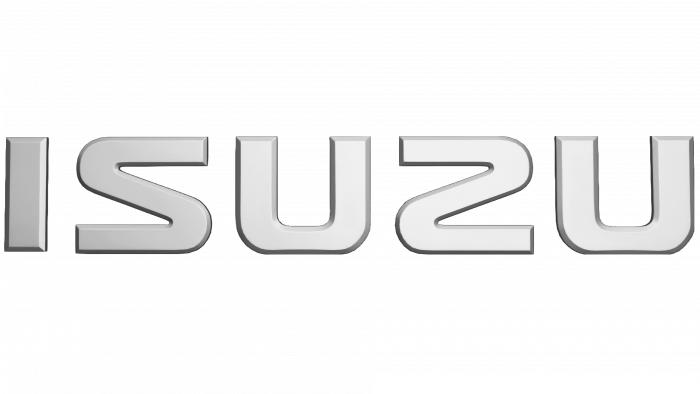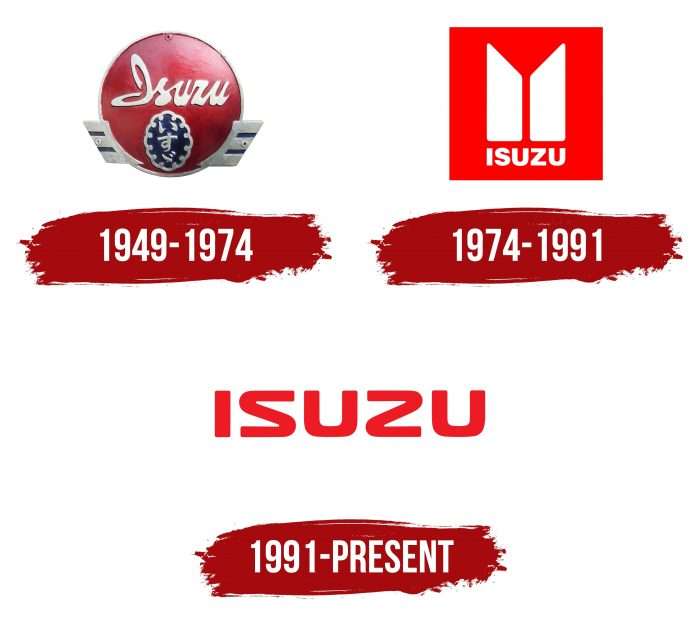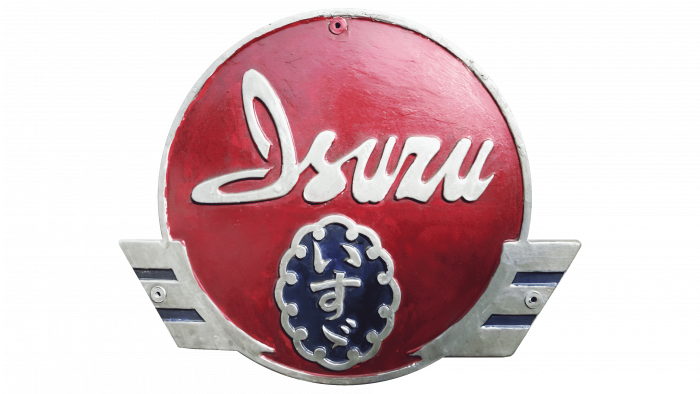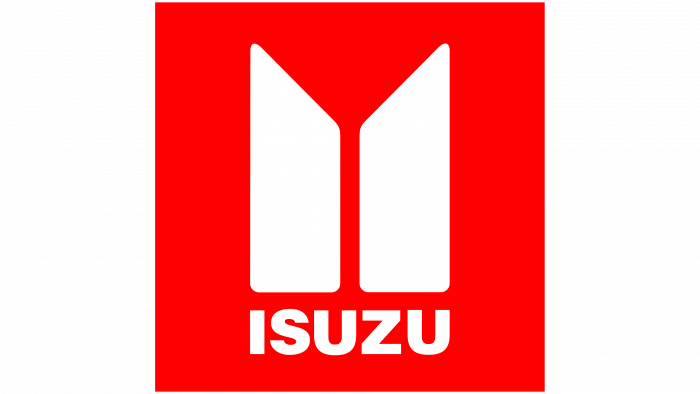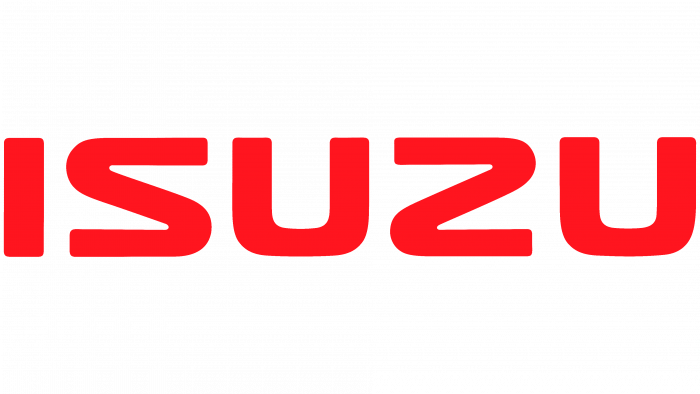Stylish, quiet, and safe cars embody the Isuzu logo. The emblem shows that the cars have a modern design and a powerful engine. Their impressive size allows them to overcome any obstacles with brilliance.
Isuzu: Brand overview
| Founded: | 30 March 1934 |
| Headquarters: | Nishi-ku, Yokohama, Japan |
| Website: | isuzu.co.jp |
Meaning and History
Isuzu is the first car manufacturer in Japan. It began with a partnership between Tokyo Gas and Electric Industrial Company and Tokyo Ishikawajima Shipbuilding and Engineering Co., Ltd., which joined forces in 1916. Their goal was a joint project – the production of passenger cars.
In 1923, the country was shaken by the strongest earthquake that destroyed the entire infrastructure. Heavy vehicles were needed to rebuild the cities. It was supplied by American firms Ford and GM. But the state wanted to develop domestic production, so a special committee recommended starting the production of a “people’s car.” It was named Isuzu after the river that flows past the Grand Shrine of Ise. Nobody wanted to implement this plan: some companies evaluated their strengths and understood that they would not cope, while others were afraid that the car would be uncompetitive.
The first Isuzu truck entered the market in 1934. At the same time, its manufacturer Ishikawajima Automotive Works renamed itself Isuzu, confirming the seriousness of its intentions. Subsequently, the Japanese company went through several mergers and redesigned to manufacture diesel engines. In fact, from 1949 to 1953, she did just that. Its name was appropriate: Isuzu Motors Ltd. The company then returned to the automotive business with the Hillman Minx (licensed by the Rootes Group) and Bellel (the first self-developed model).
Now the full name of the company sounds like Isuzu Jidōsha Kabushiki-Kaisha and has an allegorical translation: “fifty bells ringing in harmony and celebration.” Perhaps this refers to a local shrine – the Grand Shrine of Ise, located on the Isuzu River. The temple symbol in the form of hieroglyphs adorned the hoods of some cars in the second half of the 1900s. The modern logo looks much simpler: it only contains red lettering in English.
What is Isuzu?
Isuzu is a Japanese company established in 1934 and named after the river that flows near the Ise Grand Shrine. Until 2002, it produced passenger cars, but now it focuses on manufacturing various types of commercial vehicles and diesel engines. Its passenger buses and fire trucks are popular in the global market. Many famous brands like Opel, Renault, Chevrolet, and GMC use Isuzu engines.
1916 – 1949
Historically, the Isuzu truck was created only in 1934. Moreover, the manufacturers did not take care of its identity, so it had no visual symbols.
1949 – 1974
The first brand logo appeared after Isuzu Motors Ltd. entered the market. It emerged in 1949 through many mergers but did not start producing cars until 1953. At that time, a multi-piece logo with a round red base was used. It contained a handwritten inscription “Isuzu” (above) and the symbol of the oldest shrine, the Grand Shrine of Ise, hieroglyphs (below). The Japanese written characters were inside a blue oval with a white knotted border. Small wings with three “feathers” were depicted along the edges of the circle.
1974 – 1991
The creation of the new logo was preceded by changes in the structure of the company. In 1971, Isuzu sold slightly less than half of its shares to GMC to access the American car market. And in 1974, she introduced the Isuzu Gemini car, based on the GM T platform. Designers had to develop a new brand name, especially for it, because the old one was disproportionately narrow.
This is how a red square with the image of two white “pillars” – rectangular trapezoids directed with their sharp sides upwards, appeared. Internal geometric shapes were mirror images of each other and symbolized the development of the brand, its desire to keep up with the times. Slightly lower in the square was the white word “ISUZU.” This emblem adorned cars until the early 1990s.
1991 – today
The logo has been simplified to short red lettering. Now the company is limited to the text “ISUZU,” placing it on the tailgate, body, and radiator grilles. The letters are slightly flattened and rounded at the ends. At the same time, “S” and “Z” are very similar, like mirror copies of each other.
Isuzu: Interesting Facts
Isuzu Motors Ltd., from Japan, is famous for making commercial vehicles and diesel engines.
- Start: Isuzu began in 1916 from a merger focused on shipbuilding but quickly moved into making cars. Its name comes from the Isuzu River near a very important shrine in Japan.
- First Car: In 1922, Isuzu made its first car, the Wolseley Model A-9, through a partnership with Wolseley Motors from Britain, kicking off its car manufacturing journey.
- Main Products: Isuzu is best known for its commercial vehicles, such as trucks and buses, and its diesel engines, famous for being tough and efficient.
- Diesel Expertise: The company is a leading name in diesel engine technology, making over 25 million engines used worldwide in vehicles, boats, and stationary machines.
- Eco-friendly Efforts: Isuzu is working on making environmentally better vehicles, including electric and compressed natural gas vehicles.
- Worldwide Operations: Isuzu has a big international presence, with operations in over 100 countries and factories across continents, highlighting its role in the global vehicle market.
- Collaborations: It has teamed up with other car makers, such as General Motors and Mitsubishi, to grow and innovate, creating new technologies.
- D-Max Pickup: The D-Max, launched in 2002, is one of Isuzu’s top models. It is loved for its strength, ability to handle rough terrain, and flexibility, appealing to businesses and regular folks.
- Safety Innovations: Isuzu also focuses on making driving safer with advanced technologies that help avoid accidents and protect drivers.
Isuzu’s impact on the vehicle and engine industries is huge, thanks to its dedication to innovation, environmental care, and leading the way in diesel technology. This has solidified its position as a key player in the global commercial vehicle and engine market.
Font and Colors
The old brand symbol adopted at the beginning of the collaboration with General Motors has several meanings. According to the official version, this is a graphical expression of the company’s growth. Others see it as the author’s interpretation of the quality mark. And someone considers the two white “columns” to be a stylization of the first hieroglyph from the word Isuzu, written in Japanese. It doesn’t matter anymore because the automaker now uses a text logo that does not confuse.
When the designers designed the Isuzu word mark, they created the letters from scratch. The result is stylish lettering with rounded corners. “S” and “Z” are the same in shape, only directed in different directions. Based on the brand’s logo, typographers at Iconian Fonts came up with a similar typeface called Usuzi.
The attention-grabbing red color is in part related to the Sun Circle flag of Japan. According to local traditions, it symbolizes prosperity and peace.
Isuzu color codes
| Pigment Red | Hex color: | #ed1c24 |
|---|---|---|
| RGB: | 237 28 36 | |
| CMYK: | 0 88 85 7 | |
| Pantone: | PMS Bright Red C |
